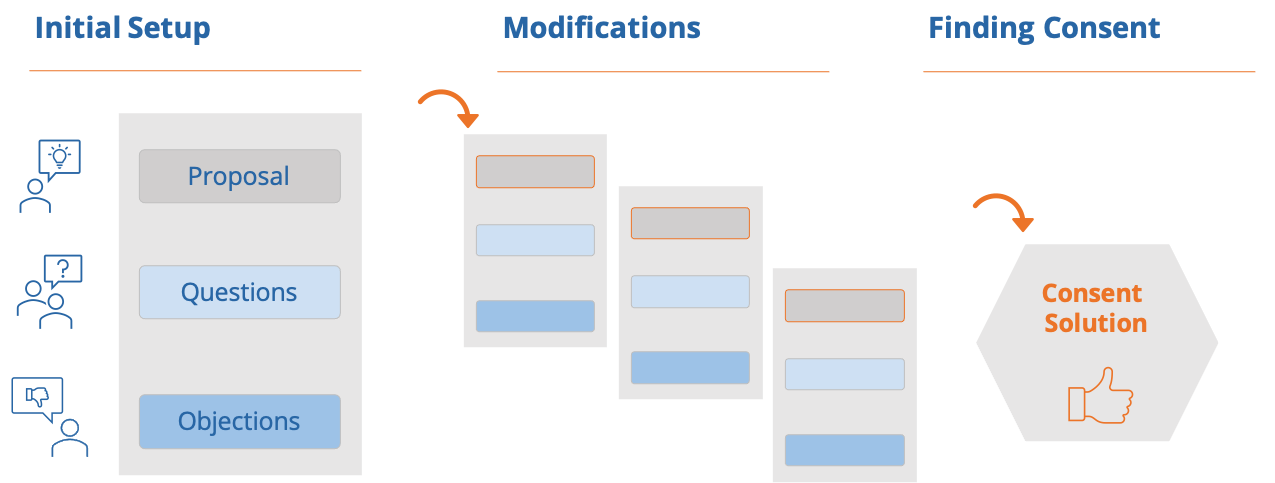
Consent Decision Making procedure
proceed
- They first describe the current solution or planned decision.
- Then clarify any questions you may have.
- As soon as the solution/decision presented is understandable for all participants, note “overriding” objections.
- Such objections usually require compromises, which in turn lead to an adjustment of the original proposal.
- This results in a new suggestion and you go through steps 1-4 above again.
- Up to three rounds are possible in this way with the aim of achieving a solution that is acceptable to everyone at the end.
description
The Consent Decision Making Method is a decision-making process for groups to arrive at a mutually defined “acceptable and consensual” solution. Such viable solutions are about always being willing to compromise and accepting different perspectives.
Thematic classification
Method for making decisions in groups or when there are different views.
Who benefits from this method?
- Organizations
- Business units
- Corporations
- Startups
- Project management
- project teams
- Committees such as the supervisory board, steering committees
Practical tips
- The method can be challenging and stressful for participants who need more time or intensive exchange to formulate their opinion.
- In this case, 2-3 days should be allowed for each participant to review the proposal, discuss it with colleagues and raise objections.
- The moderator should always check whether an objection is a real showstopper or not. Only then is compromise necessary.
- If you raise an objection, you should always try to include suggestions for possible adjustments. Black and white thinking should be avoided here. The willingness to compromise is critical to the success of this method.
- After the 2nd iteration, participants should be reminded to find a solution that all parties can live with.
Limits of Application
The method requires that the proposals are always clearly defined.

